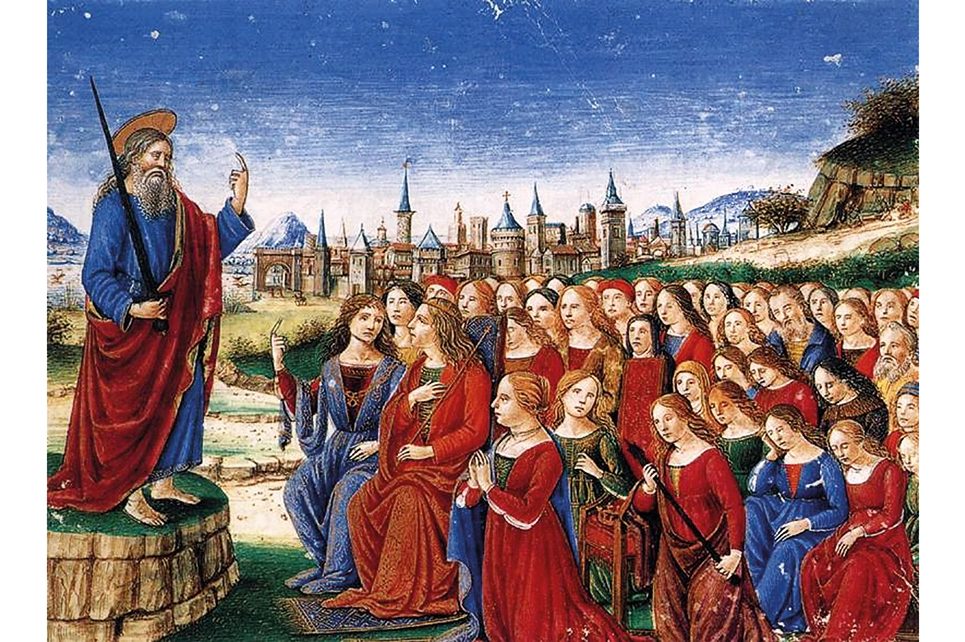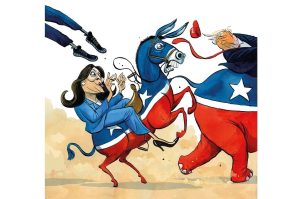It is easy to overlook the importance of Central Europe, writes Martyn Rady at the start of this fascinating book. For some modern writers the region is best typified by similarities, or differences, over postboxes, popular preferences for spirits over wine or “the heavy smell of boiled cabbage, state beer and a soapy whiff of overripe watermelons.” For others, it is an exotic world of “small nations” east of Germany, where one has to wait for the end of the sentence to learn the operative verb: a place of “baffling” languages “written with an abundance of consonants, odd diacritical marks and, in places, even a different alphabet.”
Take a step back, and Central Europe takes center stage. Conflicts arising in the region have changed the world, from the Thirty Years’ War, which “engulfed almost the entire continent, with sideshows in Africa, the Caribbean and even distant Taiwan,” to the two world wars (both of which started in Central Europe), to say nothing of the present invasion of Ukraine, which is already the “most destructive war waged in Europe for more than seventy years.”
One problem lies in defining what and where Central Europe is, since it is often characterized by what it is not. Rady’s masterful overview seeks to change this by looking at 2,000 years of history, from ancient Roman times to the present. When Europe was divided between east and west, “Central Europe fell from use as a term.” It is time to rethink the label.
Rudolf II was mainly interested in wizards and alchemists, and finding scandalous ways of harming enemies
The breadth of Rady’s coverage is as impressive as it is eclectic, with gems scattered throughout the book. One Habsburg was so penny-pinching that he traveled with his own chicken coops to avoid having to buy — and be overcharged for — eggs. We discover that the first permanent bridge across the Danube linking Buda and Pest was modeled on Marlow’s across the Thames. And we learn of the “Cameralists,” the administrative servants who shaped chanceries and bureaucracies, and were responsible for the central accumulation of information used in the top-down planning of massive theoretical projects, such as the blueprints to modernize territories in Hungary that had been recaptured from the Turks.
Rady reveals that communist authorities in many countries stockpiled pornography in warehouses to hand out in times of crisis. And he looks at how the revolutions of 1848 that gripped Europe led to new fashions and trends that allowed people to demonstrate which national group they belonged to. Czechs went for “elaborately buttoned jackets,” while Slovenes favored “dormouse pelts.” In Hungary, where clothes were more expensive, facial hair led the way: no fewer than twenty-three styles of mustache were identified, each denoting a different affiliation, including the “Slav catfish.”
In Rady’s knowledgeable hands, such predilections become understandable and even sympathetic. Central Europe has always been a place of movement, of cosmopolitanism and a search for identity and belonging. This is partly explained by its geography, but also by the tumultuous events that have engulfed it. The advances of the Ottoman Turks brought cascading waves of migration, and World War Two scarred it badly, with its demographic profoundly changed by the conflict itself, the Holocaust and the shadow of the Soviet Union — leading to millions of deaths, forcible displacement or the search for pastures new.
But Central Europe was not always “a passive victim”; nor was its diversity always an Achilles’ heel, but often a source of ideas, exchange and tolerance. A German merchant visiting Vilnius in the 1580s was amazed that the city had “all sorts of religions and sects, all of which have their own churches and public observances,” from Catholics to Calvinists, Anabaptists to Orthodox, and Jews to pagan Tatars. Fynes Moryson, an English traveler to Bohemia around the same time, noted with astonishment not only that there was a “great confusion of religions,” but that many members of the same family had different beliefs and yet “rested in one bed together.”
This marks one important difference to what was current in other parts of the continent during the sixteenth-century Reformation — not least in Elizabethan England. So, too, does the region’s political pluralism. For several periods, large parts of Central Europe were tied together, usually through the force of personality of individual rulers. After the fall of Rome’s western provinces, this coherence often proved fleeting. Charlemagne was a rare example of a sovereign who was able to expand his territories at the expense of rivals, doing so by brute force.
Although Charlemagne’s realm splintered soon after his death, the model was followed repeatedly and regularly by others — through the incorporation of new peoples, the rewarding of new elites and attempts to create a common structure that glued people together, rather than allowing differences to undermine them. In Charlemagne’s case (and that of the Ottonians in the tenth century and the Salians and many others after), the primary legacy to lay claim to was of Rome itself — not only through influence over the Eternal City but insistence on an imperial title, and even the redistribution of columns and stonework to adorn places that had been of only marginal interest to the Roman authorities.
As Rady shows, the main problem was that such models of kingship in Central and Eastern Europe were expensive and fragile. Nobles were exceedingly skilled at obtaining exemptions, privileges and rights — which meant, in turn, that while certain sovereigns retained their powers, and were spectacularly rewarded, their successors often weren’t. The result was a constantly changing political system of rise and fall. In the later Middle Ages, says the author, if one had a map that was sufficiently detailed, it would show “a mosaic of 1,000 or so separate statelets.”
Rady writes with flair and humour about some of the great (and not so great) figures of the past — including Matthias Corvinus of Hungary and his extraordinary library, and Charles IV of Bohemia, who transformed Prague into the fourth-largest city north of the Alps, but in doing so gave a platform to firebrand preachers such as Jan Milic and Jan Hus, who took to proclaiming the imminent arrival of the Antichrist. And then there was Rudolf II of Austria, whose own nephews described his primary interest as being in “wizards, alchemists, Cabbalists and the like” and “finding scandalous ways of harming his enemies.” And the Empress Maria Theresa — “a prodigious meddler,” says Rady, who insisted on decrees being pasted in shop windows about “the correct blowing of horns, the design of tobacco pipes and the qualifications needed to visit a library.”
If Central Europe was hard to dominate, it was also a region that offered almost unlimited opportunities for imperialist projects. In western Europe, empires were built overseas; in Central Europe there was an unending contest between rival powers (meaning, by the nineteenth century, Austria, Prussia and Russia above all, but others periodically too). “Roll up that map, it will not be wanted these ten years,” said Pitt the Younger on hearing of Napoleon’s defeat of the Austrians and Russians at Austerlitz.
The effects of such division underpinned the dark days of the past century, with the traumas of the Versailles settlement, the Holocaust, of course, and the expansion of Soviet influence over much of the region. The fractured mosaic of Central Europe continues to lead to more opportunities that are easily exploited by cynical politicians. It is hard not to see echoes now of the tens of thousands of Polish school-children who protested in the early twentieth century against the Germanization of education, or to appreciate why the fires of nationalism — and worse — are burning in the eastern half of the continent.
Rady’s magisterial history is not without concern for the future. The countries of Central Europe, he concludes, are now democracies, and “their elections are not rigged.” Admittedly, turnouts tend to be low, and governments “manipulate the media”; but at least “they do not organize the systematic stuffing of ballot boxes,” and the opposition doesn’t rely on “street-fighting paramilitaries.” But “for Central Europe, threats have always come from all directions.” Be wary, he warns, of “future, more brutal seizures” that might follow Russia’s invasion of Ukraine. This part of the world has always demanded close attention.
This article was originally published in The Spectator’s UK magazine. Subscribe to the World edition here.





















